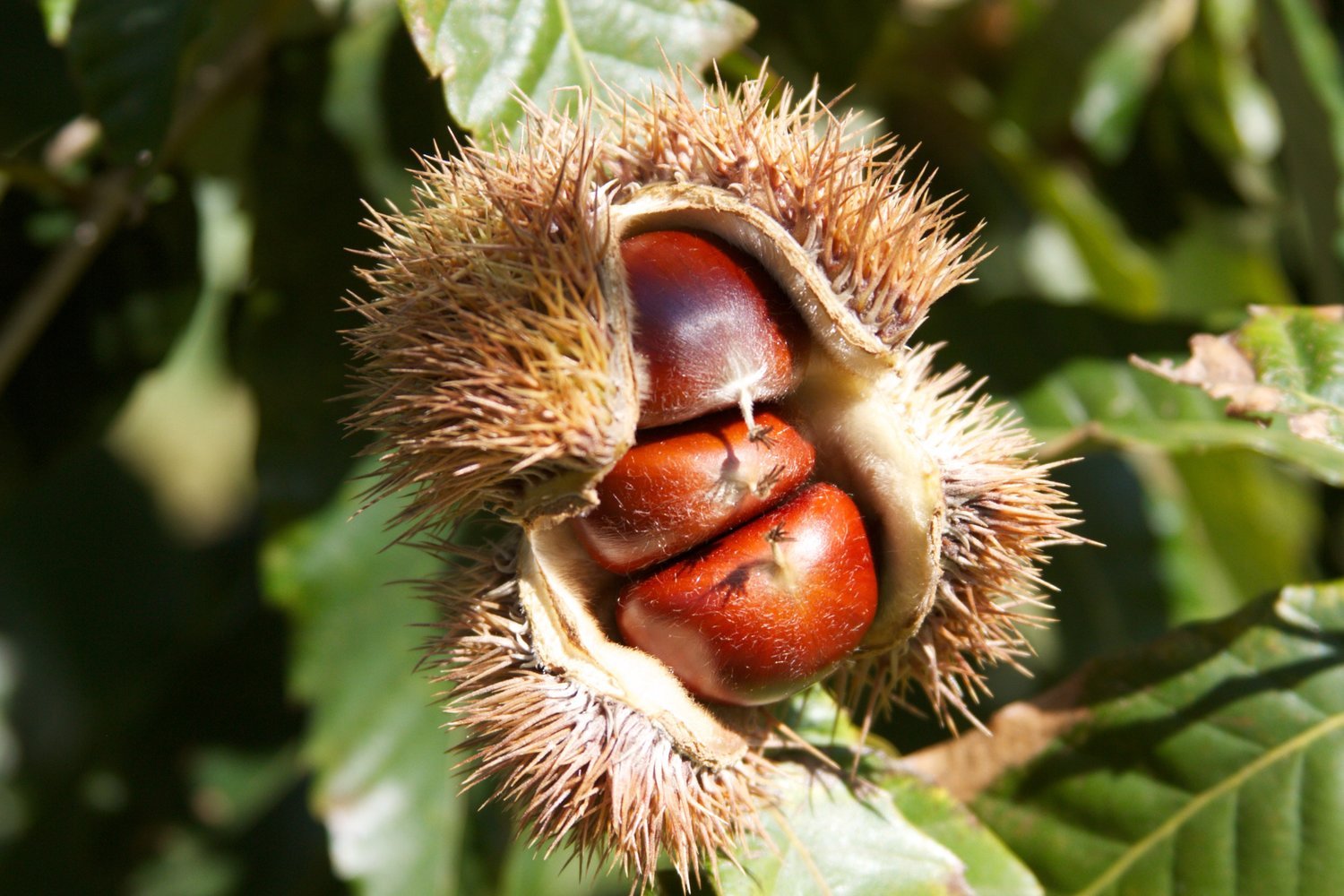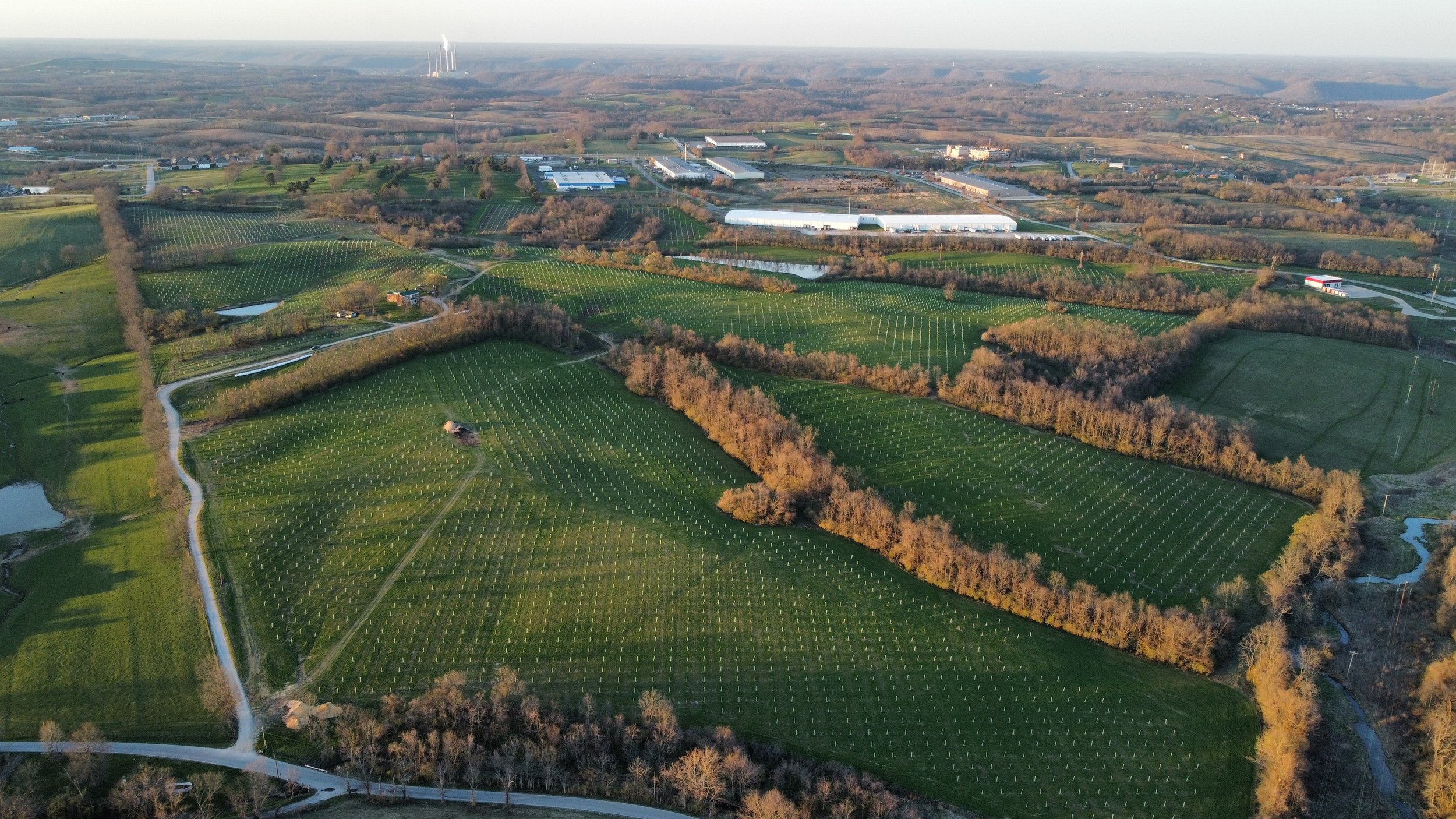
Chinese Chestnut
A perennial crop that improves profit and bolsters farm resiliance
Why Grow Chestnuts?
Chinese chestnuts are a perennial crop that helps farms diversify their crop production and improve overall profit per acre. These trees also help farms adapt to, and mitigate effects from extreme weather like drought and flooding. Today, U.S. production lags behind domestic demand, making for an enticing opportunity. Get in touch to talk about how chestnuts can benefit your farm.
Wide range of soil & climate suitability
Chestnuts grow best in well-drained acidic soil, with ample rainfall throughout the year. The trees withstand cold to USDA Hardiness Zone 5, but most important is a long growing season: a warm April and a warm September.
Gluten-free, nutrient dense food
Chestnuts are a healthy resistant starch, with a nutritional composition similar to plantains or sweet potatoes. Most people eat them whole, sweet or savory, roasted in-shell. They are also milled into chestnut flour, used for grain-free baking.
Market gap in the U.S.
We import $60 million worth of chestnuts to the United States each year, and there is opportunity to grow domestic supply for that demand, at both current and projected future prices. U.S. supply in has been small due to the loss of the American Chestnut in the early 1900’s.
Sustainable from start to finish
Chestnuts negate the tradeoff between agriculture and ecology. These trees produce real sustenance from a managed agroforest. For every person fed for 1 year, chestnuts will sequester 1.4 tons of carbon dioxide.
We have partnered with Route 9 Chestnut Cooperative and the University of Missouri Center for Agroforestry to plant the best chestnut seedlings available. Both groups have been selectively breeding for over 50 years.
Selecting Genetics
Rt. 9 Coop
Empire Elite™️
U. of Missouri
UMCA® PQK
Bullrock
Qing
4 Year Old Empire Elite™️

Building the Largest Chestnut Operation in the U.S.A
In 2021, Keavin Hill, owner of Hill Farms in central Ohio, recognized a significant opportunity to meet a growing and underserved demand for domestically-produced chestnuts. With Propagate’s support, he converted his farmland from corn, soy, and wheat to chestnut & hay production.
Use Cases
Chinese chestnut prefers well-drained loamy soil that is slightly acidic. They are known for their ability to improve soil health and nutrient cycling. These characteristics make it ideal for several types of agroforestry systems
Silvopasture
Alley Cropping
Orchards

Technical Guides
Actionable support to deepen your knowledge of chestnut production:
An up-to-date and comprehensive synthesis of important chestnut management practices, including information on fertility, pruning, pest and diseases aligned with crop phenology, and more.

Related Resources
Chestnuts & Agroforestry: Massive Opportunity for American Farmers
Producing chestnuts in the United States represents a significant opportunity for farmers to meet a growing and under-served demand. In 2022, the U.S. imported roughly 6.7 million pounds. That demand could easily be satisfied with domestic production, bringing substantial profit to U.S. farmers.
Alley Cropping with Forage Crops
Alley cropping presents an opportunity for farms producing forage crops at-scale to reinvigorate their existing operations. Farms can generate additional streams of profit from fruit, nut, timber, and livestock fodder while addressing challenges that threaten crop yield such as soil erosion, nutrient loss and extreme weather.
Read More
Silvopasture Creates Profitable and Resilient Food Systems
Livestock producers face increasing threats to farm viability from thin profit margins to extreme weather, and shifting consumer demand. Silvopasture, a form of agroforestry, is one tool in our regenerative toolkit that provides a host of benefits to producers, consumers and the planet, simultaneously.












